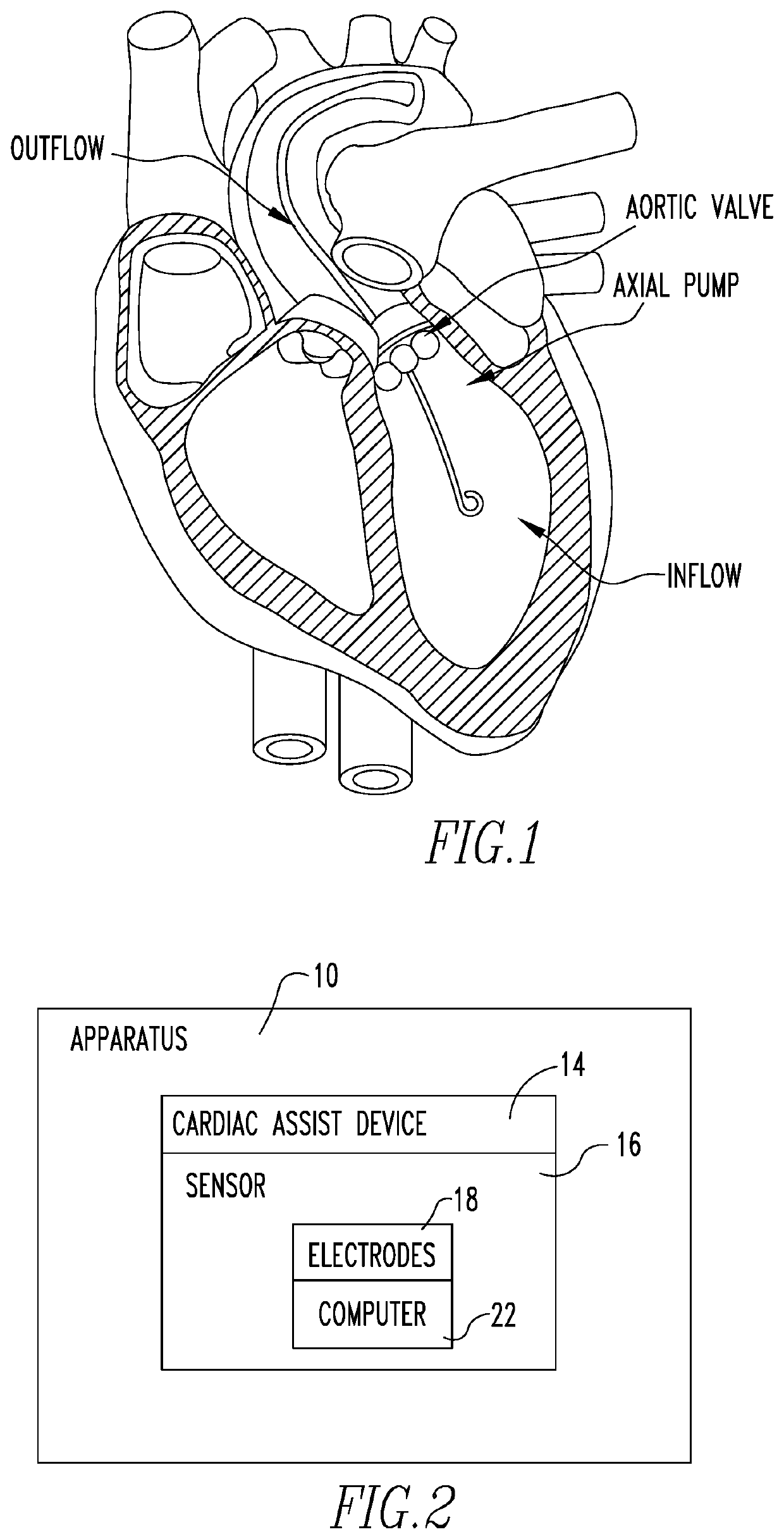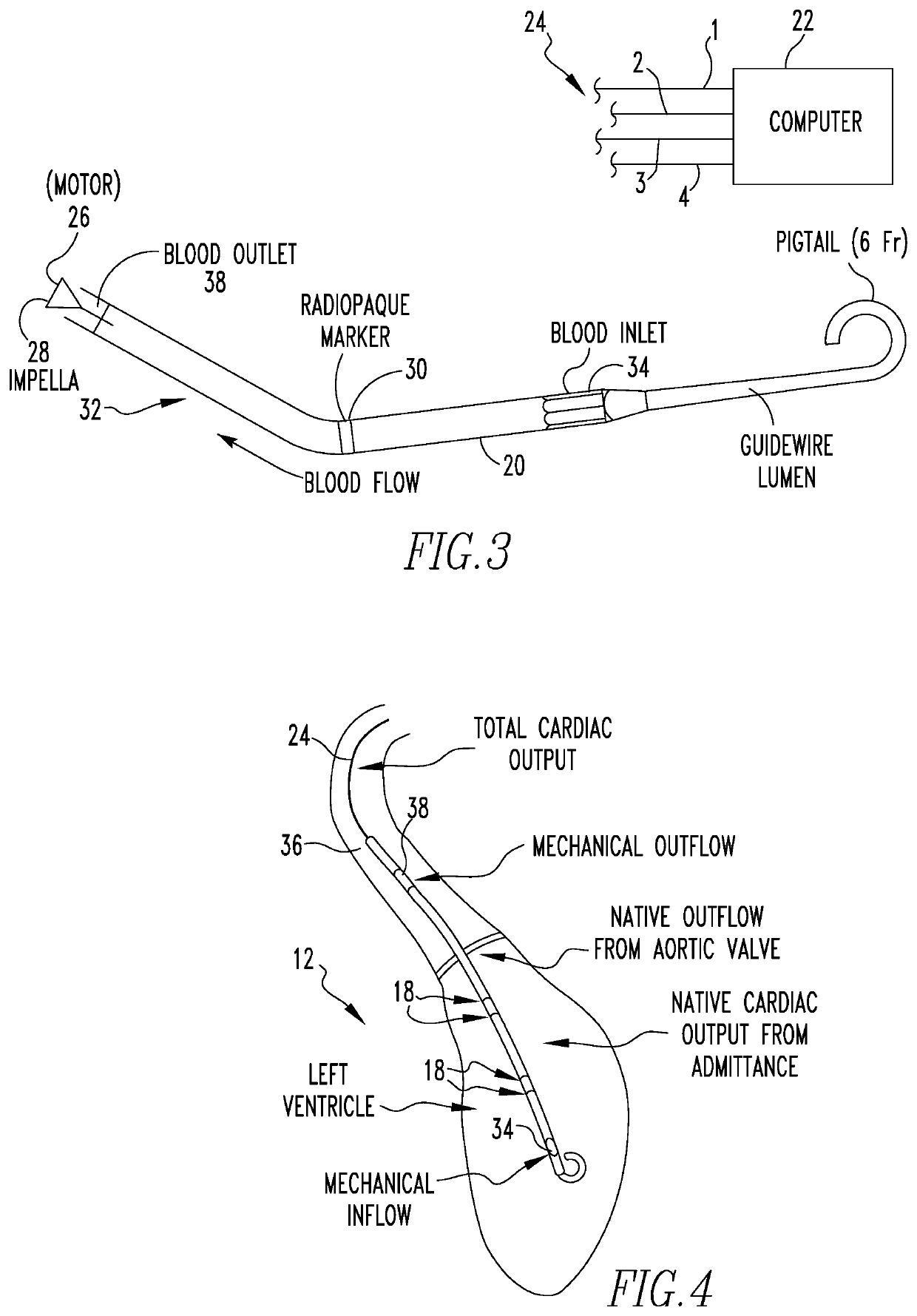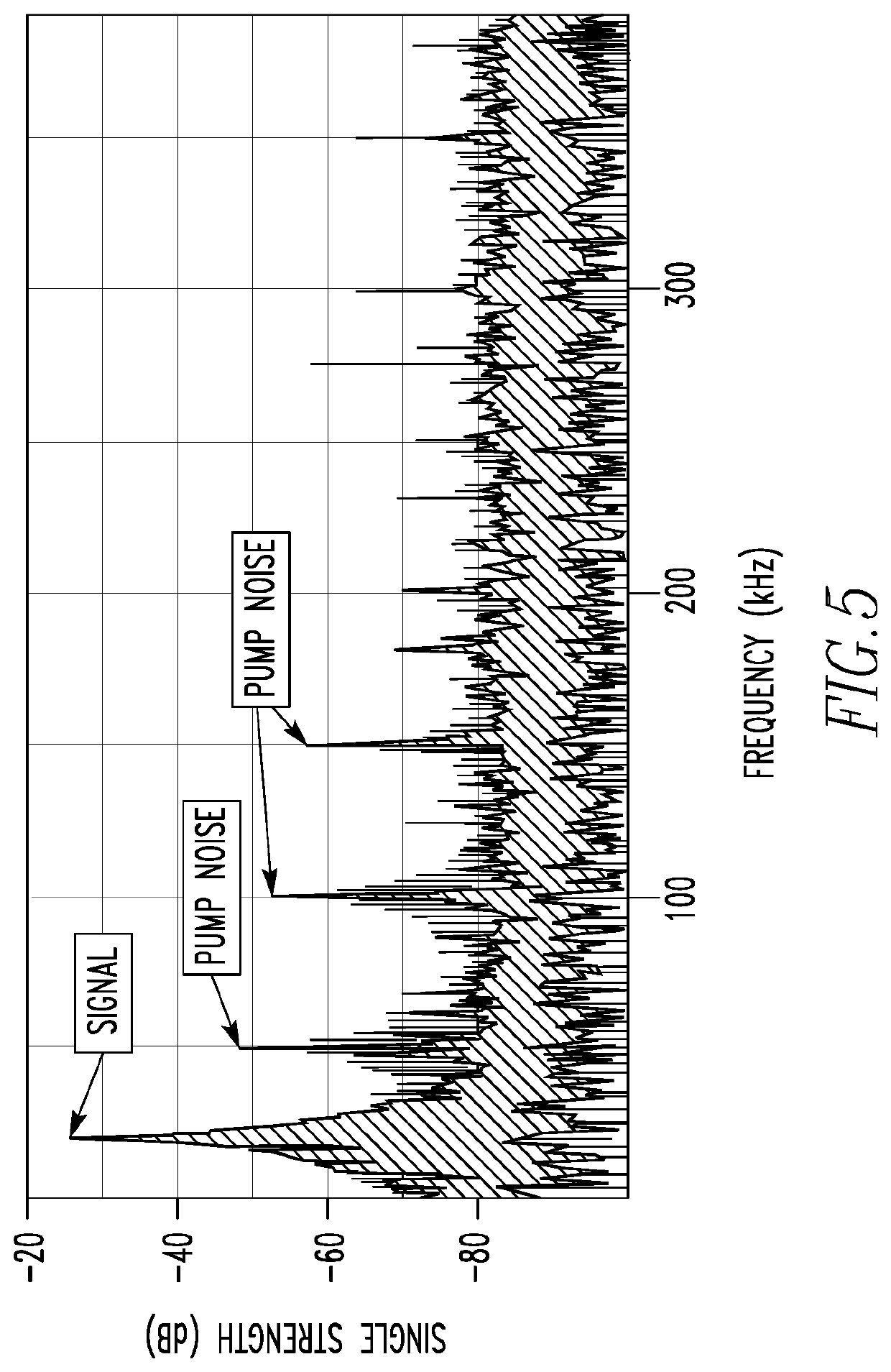Method and Apparatus for Assisting a Heart
- Summary
- Abstract
- Description
- Claims
- Application Information
AI Technical Summary
Benefits of technology
Problems solved by technology
Method used
Image
Examples
embodiment 1
iminary Studies
[0107]Electrodes 18 used: The electrodes 18 used in this embodiment were purchased in two sizes, to accommodate the two different catheter body sizes, from Johnson Matthey, UK. Two were used as electrodes 1 and 2 (with a smaller diameter), and two were used as electrodes 3 and 4 (with a larger diameter). The final embodiment is the bottom electrode configuration.
[0108]Electrode Spacing: Electrode spacing was chosen to maximize the span of the chamber of interest (the left ventricle) while ensuring that all four electrodes 18 would stay below the valve (and therefore in the chamber of interest). This was done by making sure that the most proximal electrode (electrode 4) is close to the radiopaque marker 30 that cardiologists use to place the pump inlet inside the LV, and the pump outlet outside the LV (in the aorta). By co-locating electrodes 3 and 4 with the radiopaque marker 30, it is ensured that the electrodes 18 will be within the LV if the pump is functioning cor...
PUM
 Login to View More
Login to View More Abstract
Description
Claims
Application Information
 Login to View More
Login to View More - R&D
- Intellectual Property
- Life Sciences
- Materials
- Tech Scout
- Unparalleled Data Quality
- Higher Quality Content
- 60% Fewer Hallucinations
Browse by: Latest US Patents, China's latest patents, Technical Efficacy Thesaurus, Application Domain, Technology Topic, Popular Technical Reports.
© 2025 PatSnap. All rights reserved.Legal|Privacy policy|Modern Slavery Act Transparency Statement|Sitemap|About US| Contact US: help@patsnap.com



